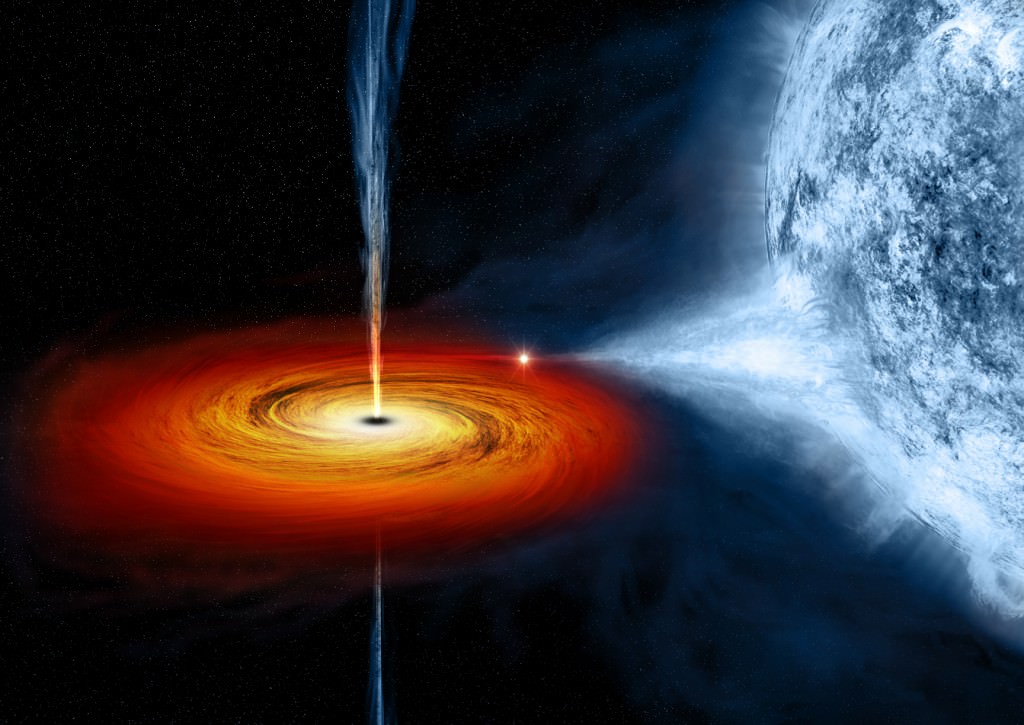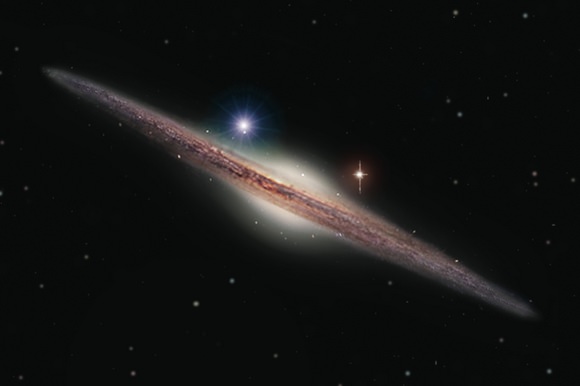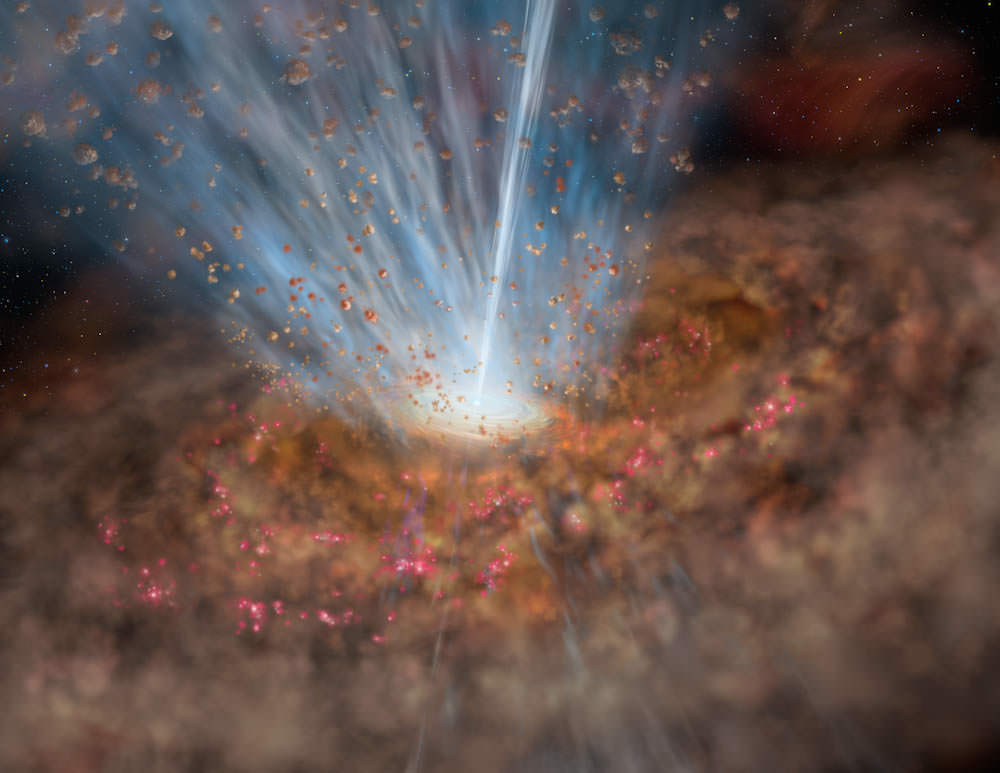Right now, as you read this article, it’s quite possible that the ultra-huge black hole at the center of our galaxy is feasting on asteroids or supercooked gas.
We’ve seen these supermassive black holes in other spots in the universe, too: merging together, for example. They’re huge heavyweights, typically ranging between hundreds of thousands to billions of times the mass of the Sun. But we also know, paradoxically, that mini supermassive black holes exist.
So while we’ve observed the gravitational effects of these monsters, a University of Alberta researcher today (May 30) is going to outline the big question: how the heck some of them got so massive. For now, no one knows for sure, but scientists are naturally taking a stab at trying to figure this out.
Maybe they were your ordinary stellar black holes, just three to 100 times the mass of the sun, that underwent a growth spurt. There’s a sticking point with that theory, though: “To do this, the black holes would have to gorge excessively, at rates that require new physics,” stated the Canadian Astronomical Society.

“We might also expect to see some black holes that are intermediate in mass between stellar-mass and supermassive black holes in our nearby universe,” the society added, “like a band that is consistently releasing albums, but never making it truly big.”
Anyway, Jeanette Gladstone (a postdoctoral researcher) will make a presentation at CASCA’s annual meeting in Vancouver today outlining some ideas. Gladstone, by the way, focuses on X-rays (from black holes) in her work. Here’s what she said on her research page:

“I am currently trying to understand a strange group of curiously bright X-ray binaries. These ultraluminous X-ray sources emit too much X-ray radiation to be explained by standard accretion [of] only a regular stellar mass black hole,” she wrote.
“So I use various parts of the electromagnetic spectrum to try and understand what makes them appear so bright. More recently I have started looking at the very brightest of these sources, a group of objects that have recently become a class in their own right. These are the hyperluminous X-ray sources.”
For context, here’s more info on a hyperluminous X-ray source (and its black hole) in spiral galaxy ESO 234-9, as studied by the Hubble Space Telescope and the Swift X-Ray Telescope.
Astronomers were pretty excited with this 2012 work: “For the first time, we have evidence on the environment, and thus the origin, of this middle-weight black hole,” said Mathieu Servillat, a member of the Harvard-Smithsonian Center for Astrophysics research team, at the time.
Credit: CASCA

